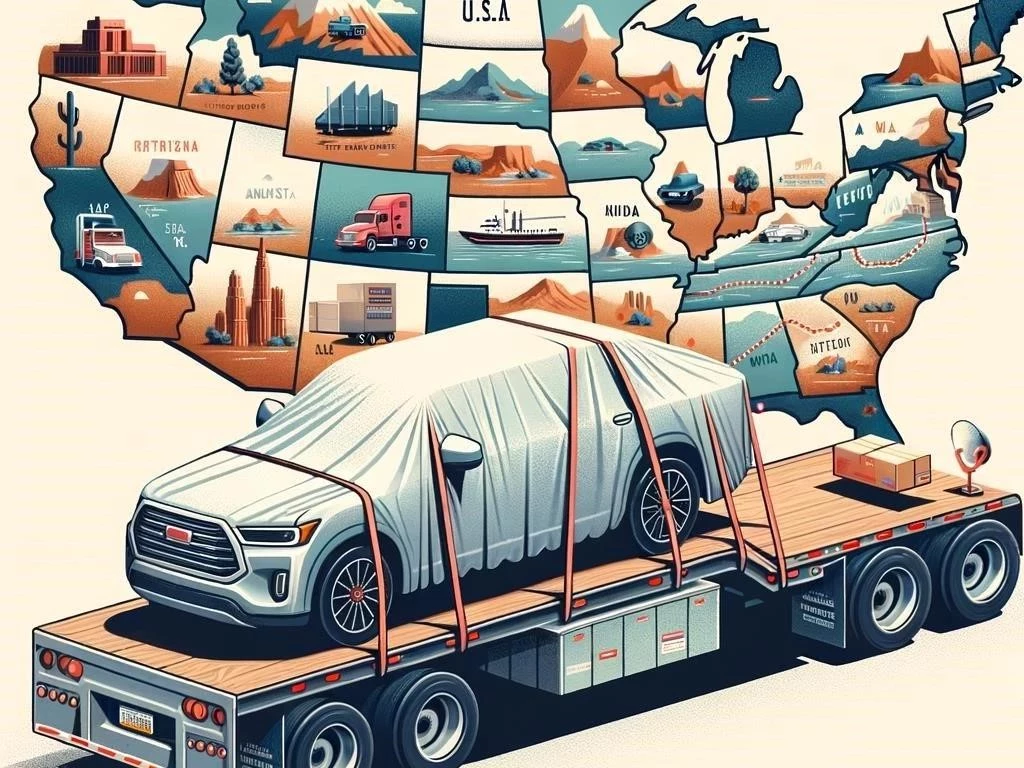How to Ship Your Car Across Country
Shipping your car across the country requires careful planning, selecting reliable auto transport services, understanding costs, and ensuring proper insurance coverage for a smooth experience.
Understanding Auto Transport Options
When planning a long-distance move, it’s crucial to understand the different auto transport options available. You may choose between open transport and enclosed trailer shipping. Open transport is typically more affordable and widely used for vehicle shipping, while enclosed trailers offer better protection for valuable cars. Additionally, consider various shipping options provided by car shipping companies, including door-to-door service or terminal-to-terminal delivery. This choice impacts pickup and drop-off convenience. Investigate freight services that specialize in interstate shipping for comprehensive auto logistics solutions, ensuring your vehicle is securely transported. Lastly, check for insurance coverage to protect your investment during transit.

Choosing the Right Vehicle Shipping Method
Selecting the appropriate vehicle shipping method is essential for a successful cross-country travel experience. Different car carriers offer various options, such as open transport and enclosed shipping. Open transport is cost-effective and suitable for most vehicles, while enclosed options provide extra protection for luxury or classic cars. Evaluate transportation costs associated with each method, considering factors like distance, vehicle type, and urgency. Research car shipping companies to find reputable providers that offer reliable services. Additionally, inquire about vehicle tracking and insurance coverage, ensuring peace of mind throughout the shipping process. Make an informed decision based on your specific needs and budget.
Comparing Shipping Quotes and Costs
When planning your long-distance move, comparing shipping quotes and costs is vital for making an informed decision. Begin by obtaining multiple quotes from various car shipping companies to assess pricing differences. Consider factors such as the type of transport, distance, and additional services offered. Be cautious of unusually low prices, as they may indicate subpar service. Look for hidden fees that can impact overall costs, including insurance and pickup and drop-off charges. Additionally, evaluate the reputation and customer reviews of each provider, ensuring you choose a reliable car hauler that meets your budget and expectations for quality service.
Preparing Your Vehicle for Transportation
Preparing your vehicle for transportation is crucial to ensure a smooth shipping process. Start by cleaning your car, both inside and out, to inspect for any pre-existing damage. Remove personal belongings and accessories, as these can pose risks during transit. Check fluid levels and tire pressure to ensure your vehicle is in good condition. Take photos of your car from various angles for documentation. Secure loose parts and disable alarms to avoid issues during transport. Lastly, ensure you have the necessary paperwork ready, including insurance details and shipping contracts, to facilitate a seamless pickup and drop-off experience with the car carrier.
What to Expect During Car Delivery
During car delivery, anticipate clear communication from the car hauler regarding arrival times and procedures. Upon arrival, inspect your vehicle thoroughly for any damage that may have occurred during transport. Compare your car’s condition with the pre-shipping photos taken earlier. Ensure that all personal belongings are intact. Discuss any concerns with the delivery driver, as they can provide valuable insights. Review the shipping paperwork, confirming that all terms were met. Additionally, make sure to check the vehicle tracking updates for accurate information on your car’s journey. Finally, collect all necessary documentation for your records, ensuring a smooth transition.








